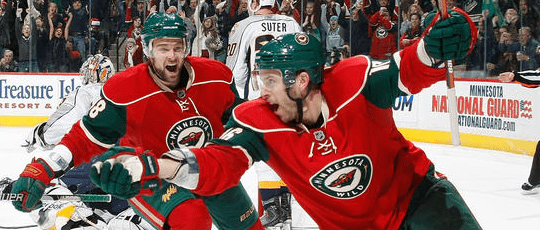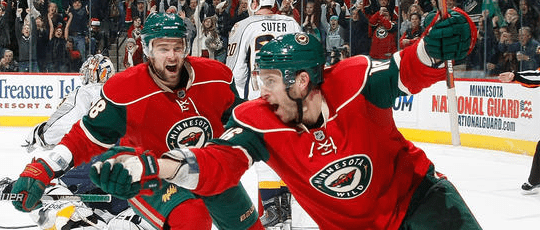Beware of Dogs: The Danger of Overlooking NHL Underdogs


NHL win-loss records can often be misleading, given that a team that has, for example, accumulated a total of 10 overtime losses, will have their record officially displayed as 53-19-10 as opposed to 53-29. The fact of the matter is though, that a team with a 53-19-10 record (the 2008-2009 Boston Bruins) still managed to lose 29 of their games over the course of the season.
The top two teams in the NHL last season, the Boston Bruins and the San Jose Sharks, both actually finished their regular seasons with totals of 53 wins after 82 games; good for .646 win percentages. On the other end of the spectrum, was the team with the fewest wins during the 2008-2009 campaign, the Tampa Bay Lightning, finishing with a paltry total of 24 wins, for a win percentage of .293.
However, after the Tampa Bay Lightning and the New York Islanders, the third worst team in the 08’-09’ NHL standings were the Colorado Avalanche, finishing their season with a total of 32 wins (.390 win%). Compare these numbers with those of the NBA’s best and worst teams—the Cleveland Cavaliers 66 wins (.805 win%), and the Sacramento Kings 17 wins (.207 win%)—and it is evident that the level of parity which exists in the NHL far exceeds that of the NBA (as well as that of the NFL).
In all likelihood, many longtime fans of the NHL are already aware of the parity that exists among its 30 hockey clubs, as they regularly bear witness to first-place teams such as the Washington Capitals fall to lowly-ranked opponents such as the Toronto Maple Leafs and the New York Islanders (occurrences which took place on 11/21/09 and 10/30/09 respectively). Fans of the game have also been known to routinely cite the “unpredictable nature of hockey” and “the salary cap era” as reasons for the regular upsets which occur over the course of the NHL season. While these justifications are perfectly valid, these same fans, many of who participate in betting on games, or even in various NHL pick’em pools or contests, also routinely make one glaring and often overlooked mistake:
They continue to—almost invariably—pick favorites to win almost every game.
No matter how many times they lose their money to “upsets that aren’t gonna happen every day”, or find themselves at the bottom of contest leaderboards due to results that “nobody could have predicted”, many who try to predict the results of NHL games will find themselves in a perpetual cycle of see-a-favorite, pick-the-favorite. While it is true that favorites in sports will undoubtedly win more games than they will lose in the long run, it is absolutely critical for any diligent NHL prognosticator (who hopes to win in the long run) to ask how this disparity in wins and losses between favorites and underdogs will truly play out over time.
Of course, short of seeing into the future, there is no exact way of predicting such results, and furthermore, there will be inevitably be periods of time when favorites will win more than their usual share of games, as well as periods of time when they will seemingly lose way too often. Predictability is not a strong suit of NHL hockey. With all the elements of uncertainty that are involved, it may even appear then that there is no exact science to picking winners in NHL games at all.
Perhaps, then, an inexact science will have to do. There may not be a crystal ball to tell you that the Leafs will beat the Capitals tomorrow night, but there are a few simple methods that could help turn these bankroll-busting/contest-crippling upsets into winning situations for diligent NHL cappers.
The first of such methods would be to be attentive of individual teams’ records when they are placed in the role of ‘underdog’. Although this does require a bit of research, it may be well worth the time to uncover well-hidden stats such as the Phoenix Coyotes’ 5-0 record this season as underdogs at home. Don’t be surprised if on certain nights NHL teams are aware that their opponents are largely expected to beat them. Some teams will tend to rise up to this occasion and play great games, while others will more or less roll over and concede defeat. Knowing which teams excel under which circumstances can make all the difference when striving to make good predictions.
Secondly, it may be equally important to consider any one game on the schedule in context to the season as a whole. Certain scheduling spots such as games on back-to-back nights, and grueling travel plans, can obviously be detrimental to any team’s chances of winning—favorite or underdog. However, the importance of a game with regards to the standings can also factor into the equation. This past week (Dec. 5th-11th) has featured a bevy upsets in the NHL, seeing underdogs go 9-4 on Saturday, 2-0 on Sunday, and 7-2 on Monday. A case of desperate teams trying to climb back up in the standings, perhaps? Or, maybe even a sign that the top teams in the league are letting up slightly, feeling that they don’t need to worry too much about the standings right now. The Edmonton Oilers’ current 5-game winning streak and the San Jose Sharks’ 4-game losing streak may attest to these trends.
Finally, there is one truth that must always be kept in mind while making picks: just because something is likely to happen, it doesn’t necessarily mean that it will happen. This is no truer anywhere than it is where referring to games in the NHL. Remember those .646 win percentages at the top of the league last season? Well, those two teams, Boston and San Jose, were probably favored in about 80-85% of their games last season, but they most certainly fell short of winning all of the games that they were favored in. What are the implications of this?
With regards to betting NHL games: many NHL favorites are frequently priced in the range of -150 (bet $150 to win $100). This would mean that if bettors were to routinely bet favorites in this price range, they would need to get 3 out of every 5 of these bets correct just to break even. If the best teams in the league are only likely to win about 65% of their games in any given season, this leaves very little margin for error, and on most nights, the best teams in the league are priced a lot closer to -180 than they are to -150.
On the flip side of the coin, many NHL underdogs are frequently priced in the +130 range (bet $100 to win $130), with some of the worst teams sometimes even being priced at +200. Just remember that even the third worst team in the league last season won 39% of their games. If they were routinely priced at +200, a bettor could have made a long-term gain of 17% by backing them—at +175 it would have been a 7% gain, and at +157 it would have been a break-even proposition—and this was the third worst team in the league!
The main points to take away from all this, is that the parity within the NHL generally creates matchups that are more even than how they appear on paper—or than what their betting odds may imply. Teams that are priced at -150 consistently do not warrant their implied statuses as 60% favorites, and teams that are priced at +150 often have more than a 40% chance to win a game. Given the right circumstances and the right matchups, it is often more profitable to bet on the underdog with the reasonable chance of winning, than the favorite that might end up costing you more than you can gain back; even if you do believe that the favorite is most likely to win on that given night.
In the long run, these underdogs can really pad your bankroll, or make the difference between your winning pick’em contest selections and the losing selections made by the contestants who didn’t win. Just remember that in the NHL, even the best teams will likely lose about 29 of their games this season, and that upsets in the NHL are almost the norm—how else can the third worst team in the league win 32 games?
NHL dogs don’t really bark. Quite often, they just bite those who dare to overlook them.